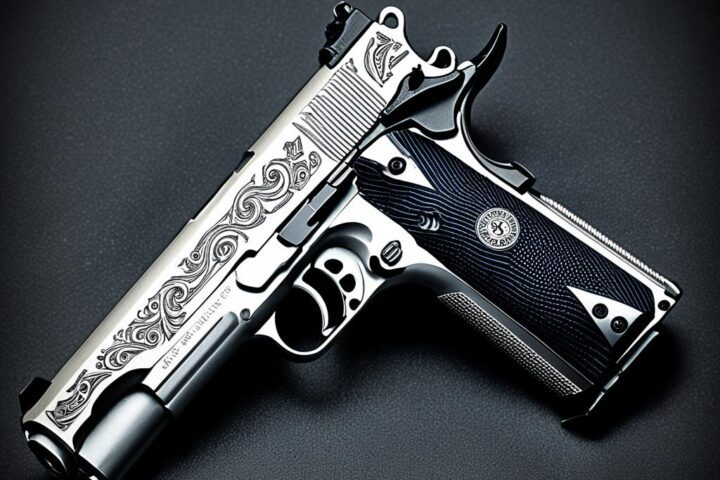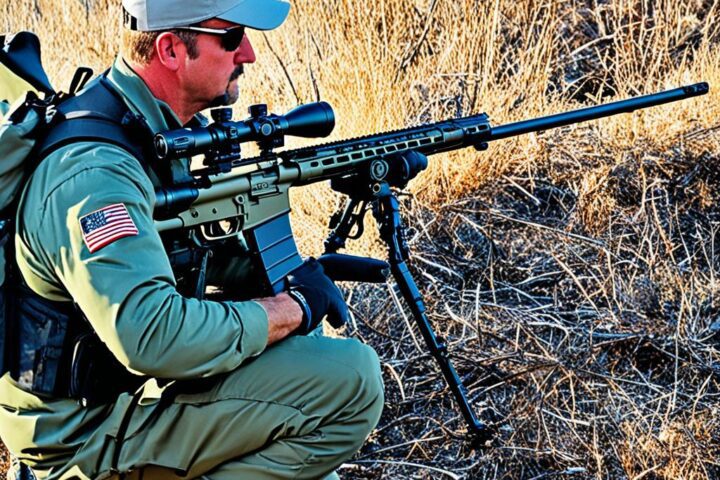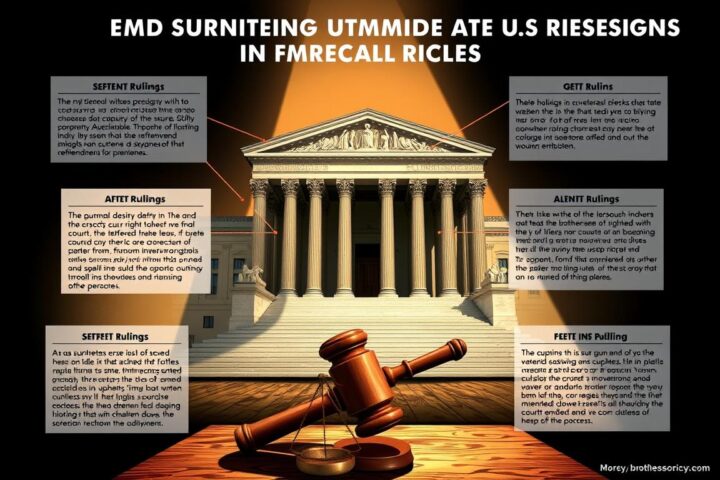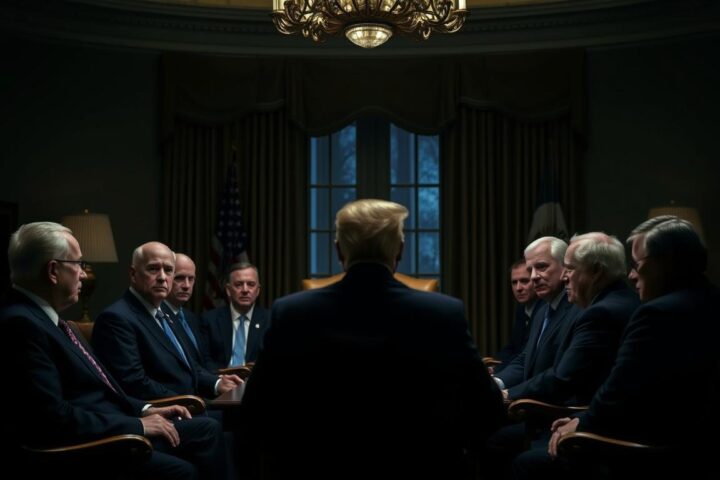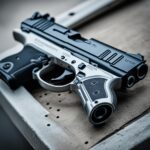Did you know Carlos Hathcock, a legendary American sniper, had over 90 confirmed kills in the Vietnam War? Some think his total could be as high as 300 to 400. His skills show how important sniper rifles like the M40 have been in war and American culture.
Since 1966, the M40 sniper rifle has been a key part of the US Marine Corps. It’s a story of how military firearms have evolved. The M40 is linked to Marine sharpshooting and has shaped military history.
This article will cover the M40 sniper rifle’s development and key features. We’ll also look at how it relates to gun control laws and the Second Amendment FAQs. The M40 has changed the battlefield and influenced debates on gun laws and USMC sniper rifles. Let’s explore this top-ranked firearm’s lasting impact on military and civilian worlds.
Introduction to the M40 Sniper Rifle
The M40 sniper rifle is a top choice for the USMC, made for precise shooting. It’s designed to meet the needs of Marine Corps snipers in tough situations. This bolt-action rifle is known for its accuracy and reliability, making it a go-to for military operations.
The M40 is more than just a rifle. It marked a big step forward in sniper technology. It’s based on the Remington Model 700, a rifle known for its performance. This makes the M40 reliable even in the heat of battle, showing its flexibility in different war scenarios.
Looking into the second amendment, the M40’s role is clear. It’s a key part of the debate on gun rights in America. Knowing about the M40 helps us understand sniper rifles and their impact on military strategy and training. The M40 represents a deep commitment to improving sniper skills and training in the military.
The Development of the M40 During the Vietnam War
The M40’s story began during the Vietnam War. At that time, U.S. military leaders saw the need for a standard sniper rifle. Before, snipers used different weapons, which caused problems on the battlefield.
As fighting got tougher, the USMC looked into sniper rifles to find the best ones. They wanted rifles that were reliable and precise.
Initial Requirements for a Standard Sniper Rifle
The Vietnam War needed snipers to be very effective in the dense jungles. The U.S. Marine Corps wanted a rifle that could handle these tough conditions. They ordered 700 rifles in 1966 to give their scout-sniper teams a reliable and accurate weapon.
Selection of the Remington Model 700
After testing many rifles, the Remington Model 700 was chosen for the M40 sniper rifle. It was based on the Model 40X, known for its bolt-action design and use of the 7.62x51mm NATO cartridge. Even with some early problems, like rifles with bad barrels and broken optics, the Remington Model 700 became key in Marine combat by 1973. By then, only 425 M40 rifles were still working, showing how tough the war was.
Key Specifications of the M40
The M40 sniper rifle is known for its top-notch design. It’s made for precision shooting. Knowing its specs is key for those interested in its performance. It’s a favorite in the military and tactical fields for its accuracy.
General Specifications Overview
The M40 sniper rifle has features that make it stand out. Here are some of its notable traits:
- Weight: About 14.48 lb for the M40A1 model.
- Length: Around 44 inches, making it easy to move around with.
- Caliber: Mainly in 7.62x51mm NATO.
- Magazine Capacity: Has a 5-round box magazine for steady feeding.
Barrel and Action Details
The M40’s barrel is key to its performance. Its 25-inch length helps stabilize bullets well. The 1:12 right-hand twist also helps with projectile stability. The Remington Model 700 action ensures smooth and consistent shots, crucial in combat.
It’s important to see how these firearms specs work together in the M40. This design has made it a top choice for modern warfare.
Variants of the M40: Evolution Over Time
The M40 sniper rifle has changed a lot since it first came out. These changes have led to different M40 variants. Each new version is better than the last, meeting new needs on the battlefield.
Introduction of the M40A1
The M40A1 was a big step forward for the M40 sniper rifle. It fixed some problems with the original M40. A key change was the fiberglass stock, which helped keep the rifle reliable in wet conditions.
Upgrades in the M40A3 and M40A5
The M40A3 brought big improvements in design for better use in combat. It built on the M40A1’s success. The M40A5, which came out in 2009, had even more updates. It had a detachable magazine and better spots for adding accessories.
Significance of the M40A6 Development
The M40A6 is the latest version, focusing on being easy to change and adapt. It has a folding stock, making it easier to carry and adjust to different battle situations. The M40A6 is important because it helps soldiers in fast-changing fights.
For those interested in owning firearms, knowing about gun laws is key.
Influence of Military Conflicts on the M40 Design
The M40 sniper rifle’s design has been shaped by many military conflicts. It shows how well it can adapt to the changing nature of war. Its legendary status comes from its performance in key operations, influencing military practices even today.
Combat Performance in Vietnam
In the Vietnam War, the M40 sniper rifle proved its worth in tough tropical conditions. Its accuracy and reliability made it a top choice for Marine snipers. Snipers used it for long-range shots, making the M40 even more famous and improving its design based on real combat.
Utilization in the Gulf War and Iraq
The M40 also made a mark in the Gulf War, showing its flexibility in deserts and cities. In the Iraq War, it was tested again, proving its worth in complex battles. Its success in these wars has shaped how Marine Corps snipers train and fight, keeping the rifle relevant in modern battles.
Components and Features of the M40 Sniper System
The M40 sniper system has many key parts that make it great for combat. Knowing about these M40 components shows why snipers choose it. It’s a top pick for its performance.
Optics and Scopes Used
The M40 sniper system is known for its sniper optics. The latest models use top-notch optics, like the Schmidt & Bender PM II. This scope helps snipers hit targets over 1,000 yards away. It shows how important good optics are for sniping.
Older M40s had the Unertl 10x scope. This scope helped make the M40 famous in wars like Vietnam. Skilled snipers used it with scopes from deer rifles. This proves skill and the right firearms features can lead to great results.
Stock Materials and Design Characteristics
The M40’s stock has changed a lot over time. It started with traditional wood but now uses USMC rifle stock materials like fiberglass. This switch made it better at handling moisture and staying strong. The design also makes it more comfortable and precise for shooters.
This change in materials shows how rifle design keeps getting better. The M40 sniper system is not just a reliable weapon in combat. It also shows how innovation helps in modern warfare.
Comparison with Other Military Sniper Rifles
The USMC M40 stands out in sniper rifle performance. It’s different from the U.S. Army’s M24. Both use the reliable Remington Model 700 action. But they have unique designs and goals.
The comparison of sniper rifles shows the M40 has a short-action setup. This makes it great for quick follow-up shots. The M24, with its long-action, can handle different cartridges. This meets the needs of each branch.
Looking at specific features, we see some key differences:
- Weight: The M40 is lighter, making it easier to move quickly in the field.
- Barrel Length: Different barrel lengths affect muzzle velocity and accuracy, important for snipers.
- Optical Systems: The M40 and M24 have unique scopes. These affect how fast and accurately you can find your target.
Looking closely at the M40 and other military models, we see they’re made for specific roles. This makes them more effective on the battlefield. Even though they share a strong base, their unique features make them perfect for their military use.
Significance of the M40 in USMC History
The M40 sniper rifle changed the game for the United States Marine Corps. It brought a new focus to sniper training, making it more structured and disciplined. This rifle became key to creating sniper training programs that focus on precision and tactical skills.
These programs have made Marine snipers more effective in combat. They’ve shown the importance of sniper training in modern warfare.
Impact on Marine Corps Sniper Training
Training with the M40 has taught Marine Corps snipers more than just how to shoot. It has taught them responsibility and how to work alone. The M40 is crucial for snipers, helping them stay accurate and focused in tough situations.
Snipers learn to adapt and keep learning, making them effective in ever-changing war scenarios.
Influence on Modern Sniper Doctrine
The M40 has shaped today’s sniper tactics, adding new tech and strategies to military plans. This shows how snipers trained with the M40 stay relevant in modern battles. As conflicts evolve, the M40’s legacy reminds us of the need for precise training and smart tactics.
Debates on gun control laws show the complexity of balancing military and civilian needs. This topic is crucial for those in the military and civilians, as explained here.
Gun Control Laws and the M40 Sniper Rifle
The debate on gun control laws is getting more attention with the M40 sniper rifle. This rifle is more than a military tool; it sparks deep discussions on the Second Amendment. Some see the M40 and the Second Amendment as key to protecting personal rights. Others believe we need strict gun laws for public safety. It’s important to understand both sides to grasp the gun ownership issue in America.
Relation to Second Amendment FAQs
Questions often come up when talking about the M40 and the Second Amendment. The Second Amendment is about the right to bear arms, linked to the early militia. Critics say high-powered rifles like the M40 should be more closely watched under gun laws. Looking at historical studies helps us understand the amendment’s original and changing meanings.
Contextualizing Firearms Regulations
Gun laws have changed with political shifts over the years. The 1994 Federal Assault Weapons Ban set rules for what counts as “assault weapons.” As gun control talks continue, the M40 is caught between its military use and possible new laws. The M40’s role in shootings affects laws, with some calling for tighter rules on sniper rifles. Looking at militia movement insights and gun law trends helps us see both sides.
Future of the M40: Replacement Initiatives
The future of the M40 is changing as the US Marine Corps looks to upgrade its weapons. The Mk 13 Mod 7 is a big step forward in sniper technology. It offers better range and accuracy for today’s battles.
Introduction of the Mk 13 Mod 7
The Mk 13 Mod 7 brings new features to replace the old M40. It has advanced optics and better ballistic performance for modern war. This rifle is designed for today’s complex battlefields.
Strategic Reasons for Transition
Switching to new sniper systems is key to staying relevant in war. The USMC knows it needs better tools for its snipers. By adopting the Mk 13 Mod 7, the corps keeps its legacy and prepares for future battles.
M40 in Popular Culture and Media
The M40 sniper rifle has made a big impact in both military and popular culture. Its unique design and tactical skills have made it a key part of many movies and documentaries. These stories highlight the life of military snipers, showing the precision and skill they bring to the battlefield.
This rifle has become a symbol of precision and tactical skill. It has caught the interest of people all over the world. The M40’s role in film and media shows its importance in military and cultural stories.
Portrayal in Movies and Documentaries
Movies often focus on the life of a sniper, with the M40 at the heart of these stories. These films show the high stakes and personal sacrifices of snipers. They make marksmanship seem exciting and heroic.
Documentaries go deeper, showing what it takes to be a sniper. They explore the training and the mental challenges of the job. These films make the M40 more than just a weapon; it becomes a symbol in both military and movie worlds.
Influence on Public Perception of Snipers
How people see snipers is shaped by what they watch in movies and media. Some see them as elite warriors, others as symbols of violence. The M40’s role in media helps give a more complete picture of snipers.
It shows them as key players in military strategy, not just tools of war. This helps us understand the complex role of military marksmen better. The M40’s impact on public perception is significant.


